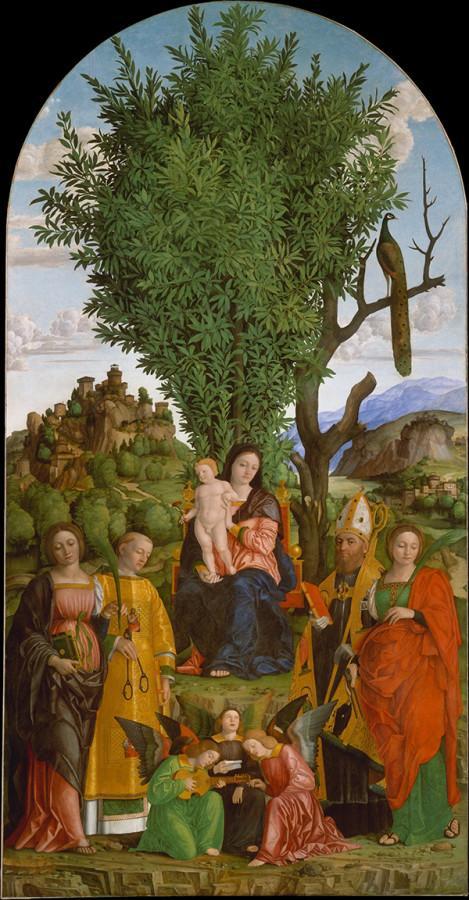Northern Renaissance art on display at Met
Girolama dai Libri’s ‘Madonna and Child with Saints’ headlines the MET’s Northern Renaissance art exhibition.
December 2, 2015
While most historical accounts of the Renaissance focus on southern Europe, the Northern Renaissance may have had an equally important impact on European history. Most of the iconic art and ideas stemmed from southern Italy, but the more religion-based works of northern Italy inspired the many artists of northern Europe, bringing Renaissance ideals to all of Europe. On Nov. 16, the Metropolitan Museum of Art added works from that movement with paintings by Girolama dai Libri and other Italian artists.
The headlining piece, standing confidently at the gallery’s entrance, is the “Madonna and Child with Saints,” Libri’s massive and beautiful work of the Virgin Mary. The quiet spectacle of the figures, the richness of the colors and the jaw-dropping scope of the landscape showcase the liveliness of the Renaissance.
Another interesting part of Libri’s work is the illuminated manuscripts — text with decorative borders and illustrations — that he created for churches around Italy. The works are almost fairytale-esque in the style and grandeur of the borders, and the illustrations are shockingly detailed despite their small size. They capture a perfect crossroads between the Renaissance and Medieval styles, housing slightly more exaggerated features and flatter environments. The work provides a different perspective, as cross-era works are somewhat uncommon.
The non-Libri works are equally beautiful, primarily focusing on sketched pencil works. While some of these works stray from the religious subject matter, the majority still focus on the saints and Madonna. It’s always so fascinating to see Mary in works of art as this quiet, commanding presence, who is always front and center, with her onlookers in awe. The pencil drawings serves to create incredibly defined figures, with defined muscles and clothes that make pleasantly dramatic and sharp images. The peak of the gallery may be the “Arrest of Christ.” The gray hue and hazy style create a beautiful, surreal image, standing out among the rest.
Another standout is “The Descent into Limbo,” which features the ever-terrifying, creative and strange images of demons and monsters that can only be found in Medieval art. It’s creepy, surreal and comprehensive look into the religious mindset of a time rarely portrayed.
It’s worth noting, though, that the gallery is rather small, made up of 14 works. Fortunately, a number of other dai Libri works can be found in the Renaissance section of the Met.
Email Carter Glace at [email protected].



























































































































































